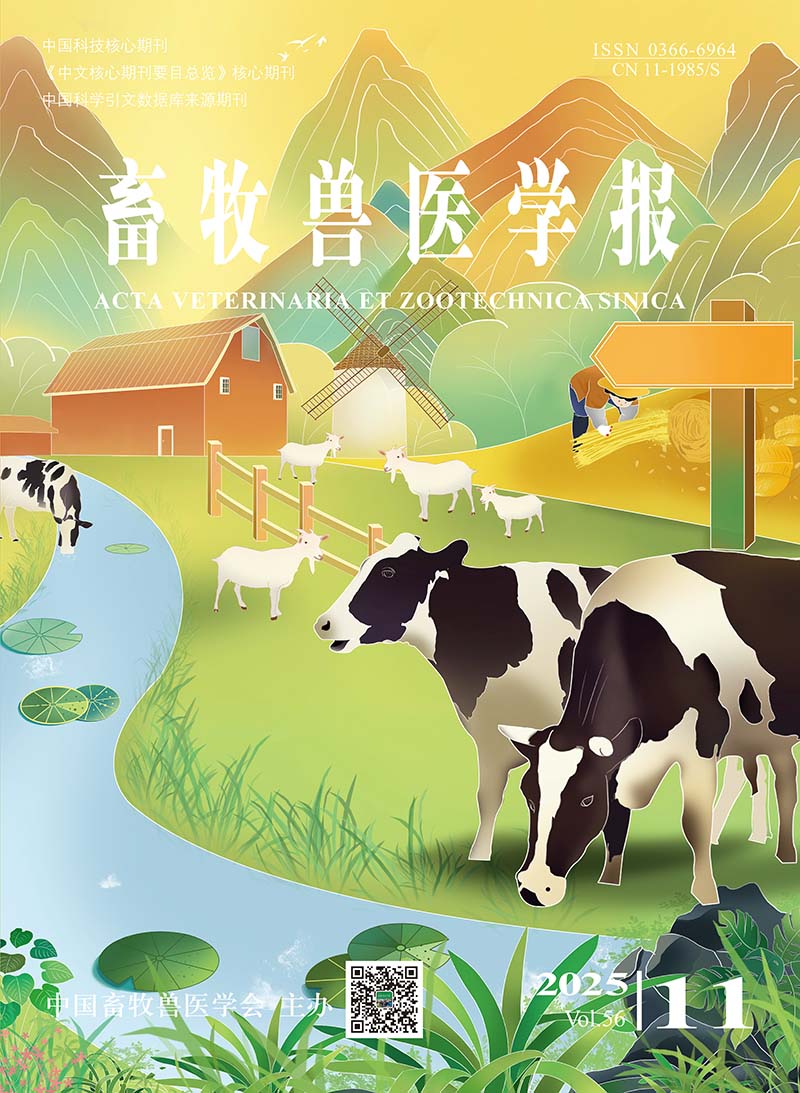-
Effect of Diets with Various Levels of Defatted Rice Bran on Carcass Traits and Meat Quality of Suhuai Pigs
- HAN Pingping, GAO Chen, LI Pinghua, WANG Binbin, FAN Lijuan, WANG Huan, PU Guang, LIU Chenxi, ZHANG Zongping, NIU Peipei, WU Chengwu, ZHOU Juan, LI Huixia, HUANG Ruihua
-
2020, 51(4):
783-793.
doi:10.11843/j.issn.0366-6964.2020.04.014
-
 Abstract
(
309 )
Abstract
(
309 )
 HTML( )
HTML( )
 PDF (1144KB)
(
525
)
PDF (1144KB)
(
525
)
-
References |
Related Articles |
Metrics
The study aimed to evaluate the effect of varying levels of defatted rice bran (DFRB) on carcass traits and meat quality of Suhuai pigs. Thirty-five healthy purebred Suhuai castrated boars with an initial body weight of (62.9±0.8) kg were randomly selected and allotted to 5 dietary groups (7 replicates for each group and 1 pig for each replicate). Pigs were fed by the Osborne Testing Stations System (OTSS). The control group (CTRL) was fed with basic diet without DFRB, and the experimental group Ⅰ to Ⅳ were fed the diet with 7%, 14%, 21%, 28% DFRB. Neutral detergent fiber (NDF) levels of 5 groups were 8.89%, 11.80%, 12.93%, 14.35% and 17.94%, respectively. Except the fiber content of the diet was different, the other nutrients were basically the same among 5 groups. The pre-feeding period was 10 days, and all pigs were fed basic diet; the formal period was 28 days, and pigs were fed basic diet and experimental diets, respectively. At the end of the experiment, all pigs were slaughtered to measure the carcass traits(carcass weight, dressing percentage, carcass straight length, carcass inclined length, loin eye area, average back fat thickness and skin thickness) of Suhuai pigs; meat samples were collected to measure the meat quality traits (drip loss, shear force, cooked meat percentage, intramuscular fat content, pH and meat color); and the longissimus dorsi muscle samples were collected for the expression analysis of phosphorylase kinase gamma 1(PHKG1), a major gene of drip loss in pigs. The results showed that:1) The substitution of DFRB had no effect on the carcass traits such as carcass weight, dressing percentage, carcass straight length, inclined length, loin eye area, average back fat thickness and skin thickness. 2) With the increase of DFRB level, the drip loss of Suhuai pork decreased first and then increased (quadratic, P<0.05), and the shear force of pork decreased linearly (P<0.05); the cooked meat percentage and pH24 h intended to increase linearly with the increase of DFRB level (P=0.061, P=0.068); there was a tendency for a decrease in L24 h* as DFRB increased (linear, P=0.085). There was no significant difference in other meat quality traits among 5 groups. 3) The relative expression level of PHKG1 gene was not affected by the increase of DFRB level (quadratic, P=0.085). In conclusion, dietary DFRB fiber level had no effect on carcass traits of Suhuai fattening pigs. Adding proper level of DFRB to the diet could reduce the drip loss and shear force and improve the quality of Suhuai pork, but the mechanism behind it needs further study.






